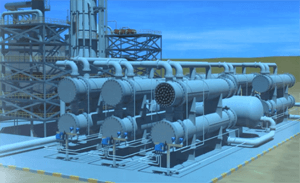A recent Hydrocarbon Processing article highlighted the changing financial picture for refiners over the past 24 months:
Those margins collapsed this year in a global fuel supply glut, providing an incentive for refiners to undertake the shutdowns necessary for maintenance.
Adding pressure to falling margins are increased costs for craft labor such as pipe fitters and ironworkers. One way to address these cost pressures is through the use of lower crude oil feedstocks to process. Opportunity crudes are discounted crude oils purchased by refiners on the spot market. While these crudes are less expensive, they pose processing challenges as we’ve highlighted in prior posts.
In a 4:12 video, Effectively Utilize Opportunity Crudes and Capture Higher Margins, Emerson’s Tim Olsen explains how instrumentation and automation can help address these processing challenges.
Tim opened the video noting some of the challenges including the properties of the crude oil not matching the capabilities of the refinery processing equipment. For this challenge, Tim described the need to blend two or more crudes together to achieve the necessary properties. Blending too much opportunity crude into the mix can lead to fouling and corrosion.
Instrumentation and automation play an important role in measuring and monitoring the process in order to maximize the use of opportunity crudes while minimizing fouling and corrosion.
Blending is typically performed on the back end to produce the specifications required in final products such as gasoline and diesel. Typically, monitoring and blend operations are not as sophisticated on the front end for the crude oils. Measuring mass-based flow instead of volume-based flow for the crudes provides the right percentages required for the crude blend.
 Downstream in the heat exchangers, Tim explained how the heat exchanger bundles are typically instrumented on inlet and outlet, but not within the bundles. Without these additional measurements, it’s difficult to determine in which bundle the fouling might begin to occur.
Downstream in the heat exchangers, Tim explained how the heat exchanger bundles are typically instrumented on inlet and outlet, but not within the bundles. Without these additional measurements, it’s difficult to determine in which bundle the fouling might begin to occur.
With high-density temperature measurements coupled with a single multi-input wireless or wired digital transmitter to better identify where the fouling occurs. When identified, the percentage of opportunity crude can be immediately reduced in the blend.
Opportunity crudes with a high total acid number (TAN) can cause corrosion in the process piping and vessels. Corrosion monitors can provide immediate feedback when the percentage of opportunity crude should be reduced. Corrosion measurement methods include coupons, wireless ultrasonic sensors, probes and field signature method.
Watch the video for more on how to maximize the blend of opportunity crudes with additional measurements and monitoring. You can also connect and interact with other refining experts in the Refining group of the Emerson Exchange 365 community.

